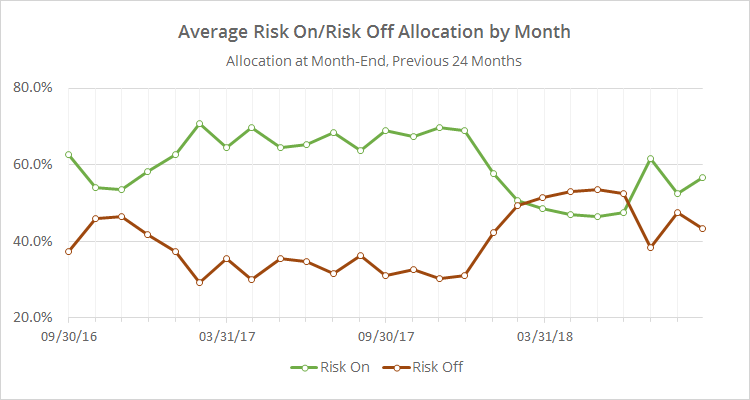This is a summary of the recent performance of a wide range of excellent tactical asset allocation strategies, net of transaction costs. These strategies are sourced from books, academic papers, and other publications. While we don’t (yet) include every published TAA model, these strategies are broadly representative of the TAA space. Learn more about what we do or let AllocateSmartly help you follow these strategies in near real-time.
Commentary:
 Tactical asset allocation as a whole underperformed the US 60/40 benchmark in September. A number of strategies that we track started the month positioned defensively, especially to US Treasuries (read more). That preemptive move was unexpected given the outperformance of risk assets recently. It turned out to be ill timed, as Treasuries and most other defensive assets struggled for the month.
Tactical asset allocation as a whole underperformed the US 60/40 benchmark in September. A number of strategies that we track started the month positioned defensively, especially to US Treasuries (read more). That preemptive move was unexpected given the outperformance of risk assets recently. It turned out to be ill timed, as Treasuries and most other defensive assets struggled for the month.
As we show in the data dump below, TAA has begun to take the foot off the brake again, shifting away from US Treasuries, and increasing allocation to corporate bonds.
Data Dump:
With such a large pool of published strategies to draw on (45 and counting), we’re able to draw some broad conclusions about the state of TAA. The following two charts help to show trends in the asset classes that TAA as a whole is allocating to over time.
The first chart shows the average month-end allocation to categories of assets by all of the strategies that we track. For example, “US Equities” may include everything from the S&P 500 to individual stock market sectors. Defensive assets tend to be at the bottom of the chart, and offensive at the top. The data on the far right of the chart reflects where TAA stood as of the end of the most recent month.
Note the rotation out of US Treasuries (with a decrease from 29% to 12%), and the increased allocation to non-government bonds (from 4 to 12%). International equity exposure remains near historically low levels (click for a longer view).
In the second chart below, we’ve combined average TAA allocation into even broader categories: “risk on” (equities, real estate and high yield bonds) versus “risk off” (everything else). We realize that some asset classes don’t fit neatly into these buckets, but it makes for a useful high level view.
This chart shows that, overall, TAA has again begun ratcheting up exposure to risk. There remains significant short-term risk to investors here if the market falters in October.
We invite you to become a member for about a $1 a day, or take our platform for a test drive with a free limited membership. Put the industry’s best tactical asset allocation strategies to the test, combine them into your own custom portfolio, and then track them in near real-time. Have questions? Learn more about what we do, check out our FAQs or contact us.

